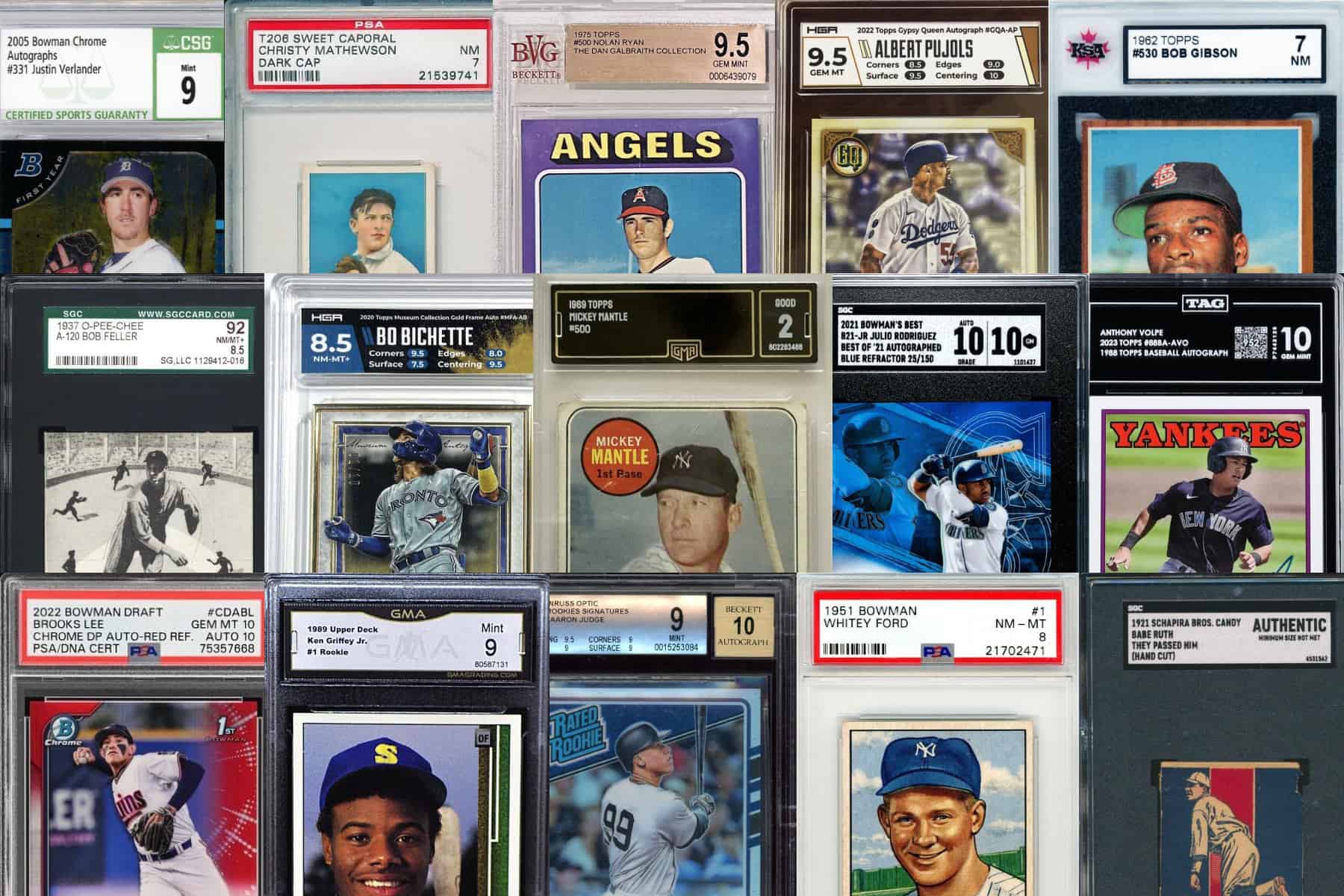The world of baseball card collecting is a vast and diverse one, filled with treasures both old and new. As collectors navigate this intricate landscape, one crucial aspect they encounter is card grading. Card grading is a process that assigns a numerical grade to a baseball card based on its condition. This grade not only reflects the card’s overall state but also significantly impacts its value within the market.
In this comprehensive guide, we delve into the art of card grading, explaining how individuals and professional services grade cards, exploring popular grading companies, and detailing the benefits of grading for collectors.
The Significance of Card Grading
Before we dive into the specifics of card grading, it’s essential to understand why it holds such importance within the collecting community. Grading serves multiple purposes, with the primary ones being:
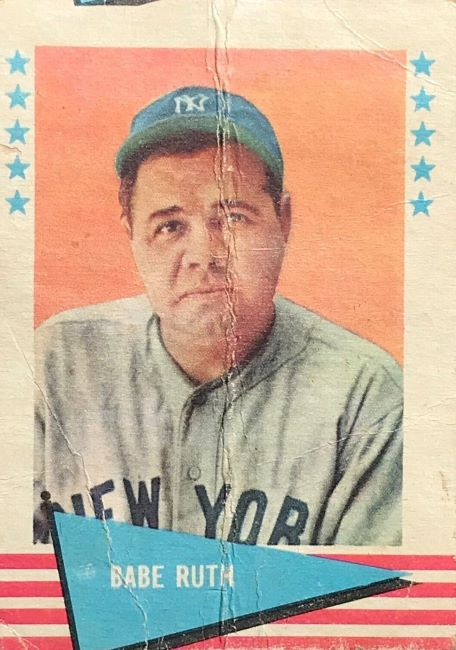
- Standardization: Card grading offers a standardized method to evaluate the condition of a baseball card. This standardization ensures that collectors and buyers can trust the grade assigned to a card, regardless of who graded it.
- Preservation: Grading companies encapsulate cards in protective holders, safeguarding them from environmental factors that can deteriorate their condition, such as moisture, UV light, and physical damage.
- Market Value: Perhaps the most crucial aspect of grading is the impact it has on a card’s market value. A higher grade typically results in a higher price when buying or selling a card.
How Does Card Grading Work?
The process of card grading involves a careful evaluation of various card attributes. When assigning a numerical grade to a card, evaluators collectively consider these attributes. Here’s an overview of the key factors considered in card grading:
Centering
Centering pertains to how well the image on the card is positioned within the borders. During the printing process, the aim is to achieve perfect horizontal and vertical alignment, with the image centered precisely between the edges. Cards with perfect centering receive a higher grade.
- Perfect Centering: Perfect cards are aligned precisely within the card’s borders (both front and back).
- Off-Center: Off-centered cards have the image shifted towards one edge or corner. This can vary from slightly off-center to severely off-center.
Corners
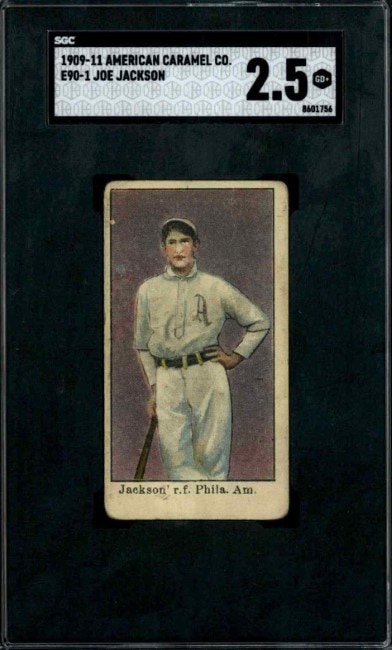
The condition of a card’s corners is crucial in grading. Corners are prone to wear and damage over time, and the extent of this damage directly impacts the grade.
- Sharp Corners: Cards with sharp, well-preserved corners receive a higher grade. Corners should be square and free from any significant dings, creases, or rounding.
- Rounded Corners: Slight rounding of corners will lead to a lower grade, while heavily rounded or damaged corners can significantly lower the grade.
Edges
Examine the edges of a card for any wear, chipping, or damage. A well-preserved edge contributes to a higher grade. Cards with clean, sharp edges receive a better grade. Any signs of roughness, chipping, or fraying will lead to a lower grade.
Surface
Scrutinize the card’s surface for imperfections that may include:
- Scratches: Scratches on the surface are a significant detriment to the grade.
- Scuffs: Scuff marks, which are lighter than scratches, also impact the grade.
- Stains: Any ink or other stains on the card’s surface will lower the grade.
- Printing Defects: Any issues in the printing process, such as misaligned print or ink smears, affect the grade.
- Wear and Tear: General wear from handling, including finger or thumbprints, can reduce the grade.
Color
Evaluate the color based on whether the card’s design and coloring are vivid and true to the original printing. Fading, discoloration, or inconsistent coloration can all result in a lower grade.
- Vibrant Colors: Cards with vibrant, true-to-original colors receive a higher grade.
- Fading or Discoloration: Fading or any inconsistencies in color will lead to a lower grade.
Creases

One of the most significant factors impacting a card’s grade is the presence of creases. Creases are essentially folds or wrinkles in the card’s surface. Cards without creases will receive a higher grade. The presence of creases, especially if they are noticeable or extend across the card’s image, will substantially lower the grade.
On the extreme level, you may find cards (especially older ones) with tears. While this might render some cards valueless, on rare occasions a card is valuable enough to overcome some missing parts – Half of a T206 Honus Wagner recently sold for $475,000 at auction.
Miscellaneous Card Grading Factors
Graders also consider other aspects that can affect a card’s grade, including:
- Centering of the back: Well-centeredness on the back of a card is crucial, and any misalignment has an impact on the card’s grade.
- Print Quality: Any defects in the printing process, such as rough cuts or ink smears, can lead to a lower grade.
- Miscuts: Cards that were miscut during production, resulting in unequal borders, will receive a lower grade.
- Writing or marks: With the exception of cards submitted as genuinely autographed, writing and other marks will devalue a card.
- Warping: Warping refers to the bending or bowing of a card. It can occur due to environmental factors, such as exposure to moisture or extreme temperature changes. Warped cards often receive low grades because the distortion affects their overall condition and presentation.
- Compression: Cards subject to pressure or weight can cause a card to flatten or lose its original shape. Compressed cards often have visible stress marks or dimples on the surface, and this can result in a lower grade. This is one reason to avoid screwdown holders.
The overall grade assigned to a card takes all of these factors into account. For example, a card with perfect centering, sharp corners, clean edges, a flawless surface, vibrant colors, and no creases may receive a high grade like a Gem Mint 10. Conversely, a card with significant issues in any of these areas may receive a lower grade, such as Very Good (VG) or Poor (PR).
Professional Grading Services
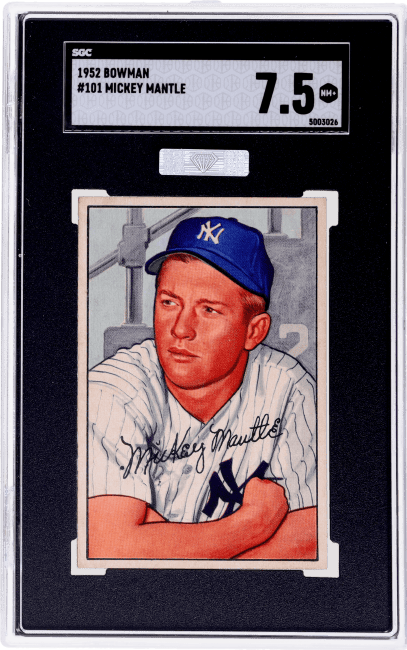
The card collecting community widely recognizes grading companies as a trusted, unbiased way to determine a card’s condition. Grading companies employ trained experts who evaluate cards based on industry-standard criteria. Three of the most popular and reputable grading services are PSA (Professional Sports Authenticator), BGS (Beckett Grading Services), and SGC (Sportscard Guaranty Corporation). Let’s explore these services and their similarities and differences:
PSA (Professional Sports Authenticator)
PSA is one of the most well-known grading services, specializing in a wide range of sports cards, including baseball. They use a 10-point scale, with a “gem mint” grade of 10 being the highest possible. PSA’s grading process is stringent and follows industry standards closely.
BGS (Beckett Grading Services)
BGS is another prominent grading service with a strong presence in the baseball card market. Unlike PSA, BGS uses a dual grading system. It assigns two separate grades: one for the card’s surface and edges and another for the centering and corners. The final grade is a combination of these two scores, often resulting in a fraction-based grade (e.g., 9.5).
SGC (Sportscard Guaranty Corporation)
SGC is a respected grading service that employs a 10-point grading scale. SGC’s reputation is built on its attention to detail and its consistency. Collectors who value vintage cards often prefer SGC’s services.
Each of these grading companies offers secure and tamper-evident holders for encapsulating cards. They also provide online databases where collectors can verify the authenticity and grades of cards.
Benefits of Professional Grading for Collectors
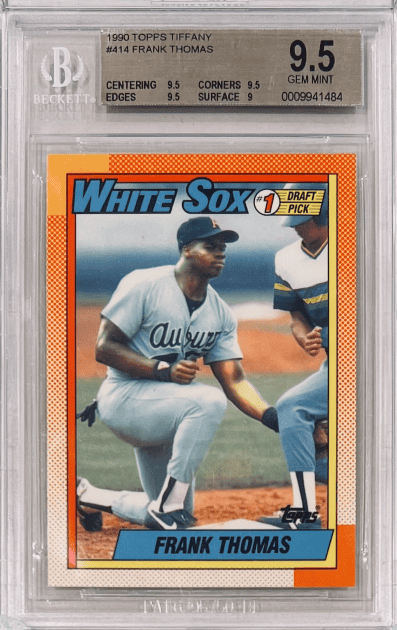
Grading offers several advantages to collectors, making it a valuable practice in the hobby:
- Authenticity Assurance: Grading services authenticate cards, ensuring that they are genuine and not counterfeit or altered.
- Standardized Valuation: Graded cards have a universally accepted standard for assessing their condition and, subsequently, their value. This standardization is particularly beneficial when buying, selling, or trading cards.
- Protection and Preservation: Graded cards are sealed in holders from the grading company. This protects them from physical wear, environmental factors, and tampering; thus, it preserves their condition.
- Market Value Enhancement: Higher-graded cards generally command higher prices in the market. Grading can significantly increase the value of a card, making it a potentially lucrative investment.
- Credibility and Trust: Grading by professional services adds credibility and trust to the card’s condition. Buyers are more confident when they see a card’s grade from a reputable service.
What Does “No Grade” or “Do Not Holder” Mean?
Grading services may refuse to grade a card for various reasons, and it’s important for collectors to be aware of these potential issues.
PSA refers to this as a “No Grade,” while other services may employ different terms. Internally at PSA, employees use the term “No Holder” to indicate that a card should not, for various reasons, bear an official grade and holder from the company.
This may or may not be for grading issues.
Here are some common reasons a grading service might decline to grade a card:
Authenticity Concerns
If there are doubts about the card’s authenticity, the grading service may refuse to grade it.
Graders typically assess authenticity based on “exemplars” – known authentic examples of the same card or set – and compare them against new submissions. They will reject cards that are, in their opinion, counterfeit or replicas.
Grading services are vigilant about identifying fake cards to maintain the integrity of their grading process.
Inadequate Condition
Grading may refuse cards in extremely poor condition, such as those exhibiting extensive damage, severe staining, heavy creases, or missing pieces, as they may be deemed too damaged to accurately assign a grade.
Incorrect Size or Shape
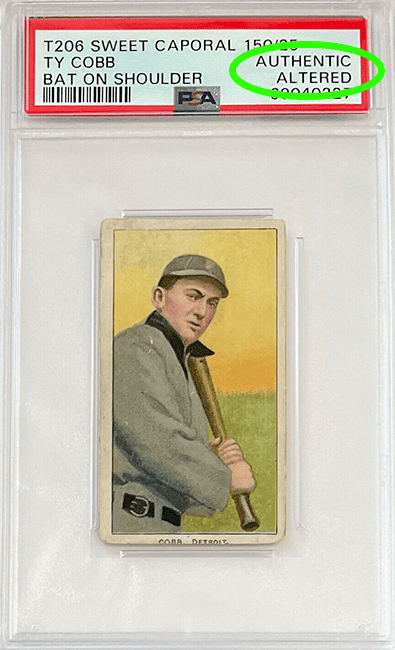
Cards that do not conform to the standard size or shape for their specific set or issue may not be graded. Card trimming is one example. When a card has damage to its edges, some people may trim minute amounts off the edge, to create a sharper edge. Because this compromises the integrity of the original card, trimming is considered unethical and cards may be rejected for that reason.
Incomplete Cards
Cards that are missing significant portions, such as a corner, may be refused grading. The missing piece could be considered a form of damage, and the card may not be complete in its original form.
Restoration or Recoloring
Cards that have undergone restoration or have had alterations made to improve their appearance may not be graded. Restoration can include efforts to repair creases, tears, or other damage, which may affect the card’s authenticity. Cards may also have been recolored so that they appear in better condition. This is also unethical and a reason for rejection.
Excessive Odors
Cards with strong or unpleasant odors, such as smoke or mold, may be refused grading. Odors can be indicative of environmental damage or contamination. Cards that are excessively dirty, soiled, or have sticky residues may also be refused grading. Grading services often require cards to be clean and free from foreign substances.
It’s essential for collectors to carefully review a grading service’s guidelines and requirements before submitting their cards for grading. Each grading service may have its own specific policies, and understanding them can help collectors avoid the disappointment of having a card refused for grading. Additionally, collectors can seek advice or clarification from the grading service in advance to ensure that their cards meet the necessary criteria for grading.
Conclusion
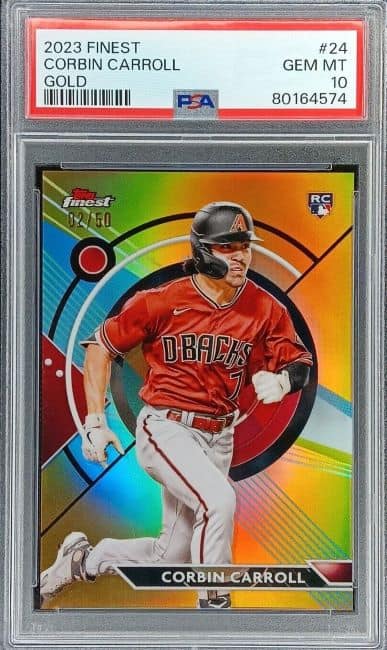
In the world of baseball card collecting, the art of card grading plays a pivotal role. It not only preserves and protects cards but also assigns them a numerical grade that directly influences their market value.
Whether collectors choose to grade their cards individually or use the services of professional grading companies like PSA, BGS, or SGC, the benefits of grading are clear. It adds a layer of credibility, trust, and protection to a collector’s most cherished pieces of cardboard history, ensuring their value endures through the years.
So, whether you’re an experienced collector or a newcomer to the hobby, embracing the art of card grading can be a rewarding and valuable aspect of your journey through the world of baseball card collecting.
